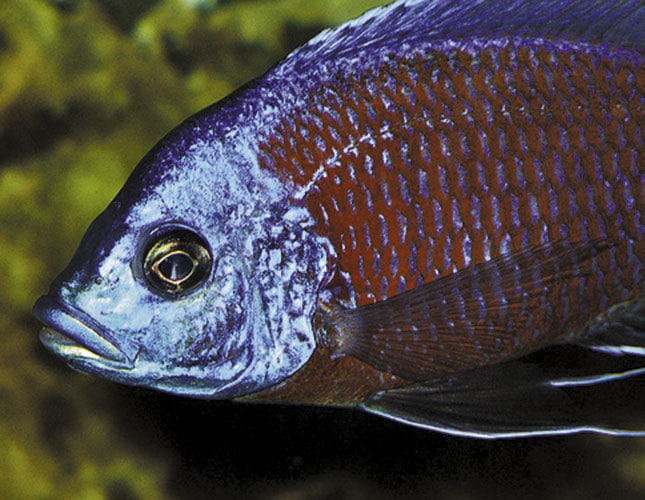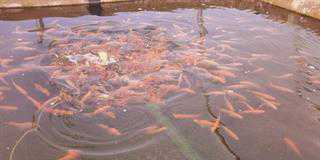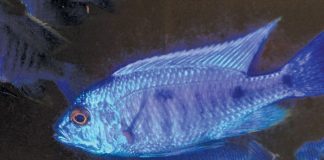
People often ask me what kind of small-scale fish farming they can do in a backyard and still make some money. Well, ornamental fish may well be the answer. The ornamental fish trade covers cold-water pond fish such as goldfish and koi carp, as well as the hundreds of species of tropical fish traditionally kept in heated indoor aquariums. South Africa imports several hundred boxes of ornamental fish each month, mostly from Singapore, Taiwan, and Malaysia, but also increasingly from European countries such as the Czech Republic.
Tropical ornamental fish fall into several categories.First there are the staples of the ‘community tank’ – the peaceful species from diverse geographical regions you can keep together in one tank. These include well-known live-bearers (fish that retain their eggs inside the body and give birth to live, free-swimming young) such as guppies, swordtails and mollies, and the tetras from the Amazon. Then there are the more specialised catfish and cichlids, many of which are from Africa and South America. Difficult to keep and/or breed species such as the discus and African Rift Valley cichlids attract the expert aquarists.
Pet shops
Is there then a gap in the market for breeding, rearing and selling ornamental fish to your local pet shop? Generally speaking, the breeding of aquarium fish is what the hobby is all about. The greatest satisfaction comes from finding out the environmental requirements of a fish species, and satisfying these demands to such an extent that the animal is healthy enough to reproduce successfully in an artificial setting.
Consequently, pet shops are often swamped with the unwanted offspring of their customers’ successful breeding – so don’t expect them to fall over you and shower you with money for your fish! That said, if you’re successful in breeding something a little more unusual, then most pet shops will happily buy from you. The going rate is around 25% of what the fish cost the public. If this seems unreasonable, remember the retailer has numerous overheads to meet, including their own inevitable fish losses.
Quality
One of the best groups of fish that can be cultured in a small backyard system is the live-bearers. But quality is essential if you’re going to be successful. The fish imported from the Far East are of consistent high quality. They are of specific strains, and not mixed species or colours – for example red wagtail platies have crimson bodies and coal-black tail fins. The fish must all be of the same size, with consistent vivid coloration, well-developed fins and no signs of any disease.
If you can consistently supply fish of this quality, then the project is viable. Unfortunately, South Africa doesn’t have a good reputation in this regard. After the first batch of high quality fish, the general trend is often one of decreasing quality – which sends the retailer straight back to the imported fish!
Small hothouse tunnels
A small hothouse tunnel with a system of grow-out tanks and a good biological filter can produce thousands of fish a month.
Sold at between R2 and R4 a fish, this can soon pay for itself. Feeding costs are relatively low compared to food fish, and the need for sophisticated filtration is also reduced. Fish grown in the bright sunlight of a tunnel system, in slightly green water full of zooplankton and phytoplankton, are of better quality than those reared indoors.
A system built with plastic tanks or tubs, and using recycled 1 000l containers from the bulk liquid-food industry will work well, and is cheap to set up. Keep running costs low by using small pumps of under 1kW and a central air-blower sourced from aquarium wholesalers. You’ll have lots of fun too!
Nicholas James is an ichthyologist and hatchery owner.
This article was originally published on 03 May 2013 in Farmer’s Weekly.













